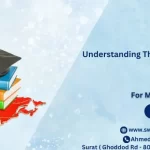Immigration, Refugees, and Citizenship Canada (IRCC) has proposed significant changes to the Immigration and Refugee Protection Act (IRPA) by introducing a new permanent economic immigration class. This new class is tailored for semi-skilled workers whose experience and training fall under the Training, Education, Experience, and Responsibilities (TEER) levels 4 and 5. The new pathway is expected to broaden the scope of skills and experience among candidates for permanent residence, enhancing the diversity of Canada’s economic immigration system.
Understanding Canada’s TEER System
The TEER system, introduced in 2022, is an evolution of the National Occupation Classification (NOC) system. It categorises occupations into different levels based on the required education, training, and experience:
- TEERs 0-3: Occupations typically requiring post-secondary education or apprenticeships.
- TEERs 4 and 5: Jobs that need only a high school education, on-the-job training, or no formal education but require some work experience.
While TEERs 0-3 have been eligible for federal economic immigration programs like Express Entry, TEERs 4 and 5 have not. This has created challenges for newcomers who enter Canada in these occupations, making it difficult for them to transition from temporary to permanent resident status.
Why This Change Matters
The creation of a new permanent resident pathway for TIER 4 and 5 occupations is a response to the growing number of temporary residents in Canada. Many newcomers start as temporary workers or students, often finding themselves in low-skilled jobs due to the current labour market demands. Statistics Canada has observed a shift in employment patterns, with more temporary foreign workers and international students moving into sectors like accommodation, food services, and retail.
These positions, often associated with lower earnings and slower wage growth, make it challenging for these individuals to fully integrate into Canada’s economy. The proposed changes aim to address these issues by providing a clearer path to permanent residence, helping to stabilise temporary resident numbers while supporting the country’s economic goals.
IRCC’s Broader Strategy
In addition to creating new pathways for semi-skilled workers, IRCC is also focusing on reducing the overall number of temporary residents in Canada. In 2023, the temporary resident population peaked at over 2 million, a level deemed unsustainable by the department. To manage this, IRCC has introduced a cap on international student applications and has included temporary resident levels in the upcoming 2025-2027 Immigration Levels Plan.
Moreover, IRCC is increasing the number of “domestic draws,” targeting temporary residents already in Canada for permanent residence. This strategy has led to an uptick in Express Entry draws for candidates with provincial nominations and those in the Canadian Experience Class. These measures are designed to help IRCC meet its permanent resident targets while reducing the temporary resident population.
Conclusion
Canada’s proposed changes to the immigration system represent a significant shift in how the country manages its labour market and immigration goals. By creating new pathways for semi-skilled workers, IRCC is opening doors for more diverse talent to contribute to Canada’s economy. As more details are expected this fall, potential immigrants and stakeholders should stay informed about these developments to take full advantage of the new opportunities. For More Info You can Contact US.
Frequently Asked Questions
1. What is the TEER system?
The TEER system stands for Training, Education, Experience, and Responsibilities. It was introduced in 2022 as part of the evolution of Canada’s National Occupation Classification (NOC) system. TEER categorises occupations based on the education and experience required, with TEERs 4 and 5 covering jobs that need minimal formal education and on-the-job training.
2. Who qualifies for the new permanent residence class?
The proposed permanent residence class is designed for workers whose experience and training fall under TEER levels 4 and 5. These typically include occupations that require only high school education, short-term training, or no formal education but some work experience.
3. How does this new pathway differ from existing immigration programs?
Currently, federal economic immigration programs like Express Entry do not generally include TEER 4 and 5 occupations. The new pathway will create an opportunity for semi-skilled workers to apply for permanent residence, which was previously more challenging for them.
4. Why is IRCC creating this new pathway?
The pathway is part of IRCTC’s broader strategy to reduce the number of temporary residents in Canada while ensuring the country’s economic immigration system is inclusive of workers with a diverse range of skills and experience. This change is also aimed at helping semi-skilled workers integrate into Canada’s economy more effectively.
5. When will more details about the new class be available?
IRCC is expected to release ministerial instructions with more details about the new class and specific pathways this fall in the Canada Gazette. Keep an eye on official announcements to stay updated.
6. Will this new pathway impact the number of temporary residents in Canada?
Yes, the new pathway is part of IRCC’s efforts to stabilise the temporary resident population in Canada. By creating more permanent resident opportunities for those already in the country, IRCC aims to manage the number of temporary residents more effectively.
7. How will this affect international students and temporary foreign workers?
International students and temporary foreign workers, particularly those in low-skilled positions, could benefit from this new pathway. It offers a clearer route to permanent residency, potentially reducing the challenges associated with low earnings and slow earnings growth in these groups.
8. How can I prepare if I fall under TIER 4 or 5?
If you are currently working in a TIER 4 or 5 occupation, it’s essential to stay informed about the upcoming changes. Consider consulting with an immigration expert to explore your options and ensure you are prepared to take advantage of the new pathways once they become available.





